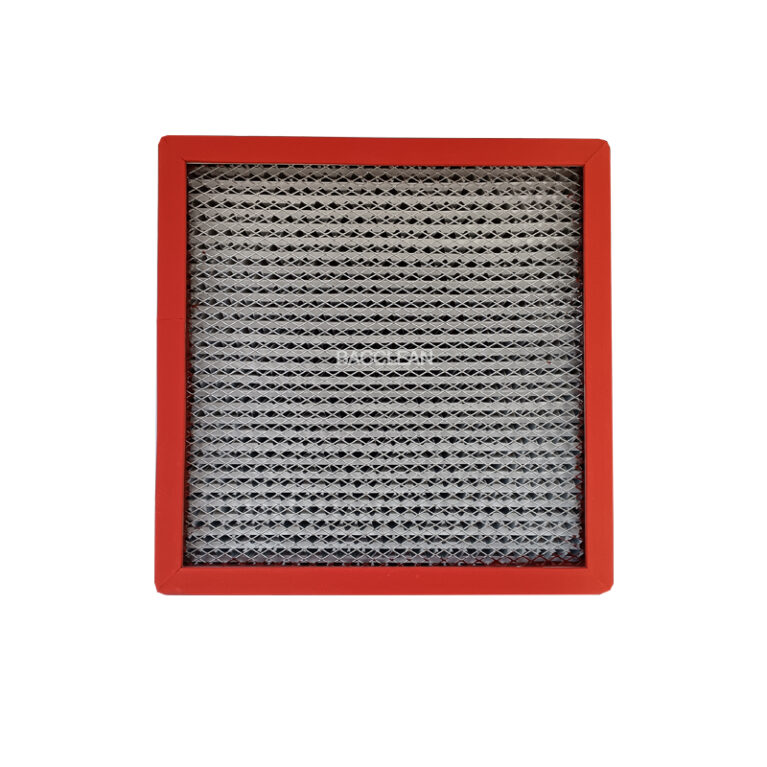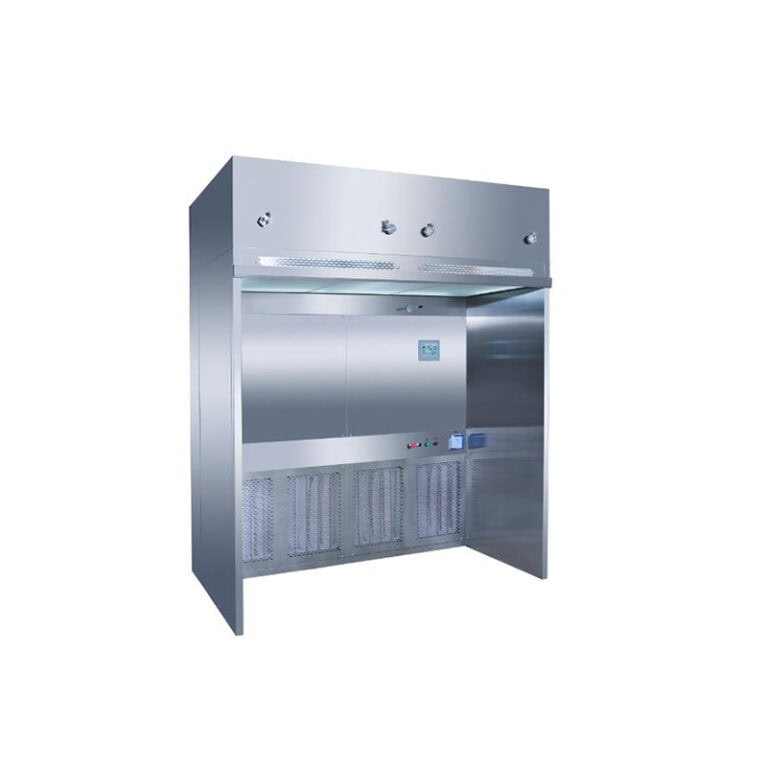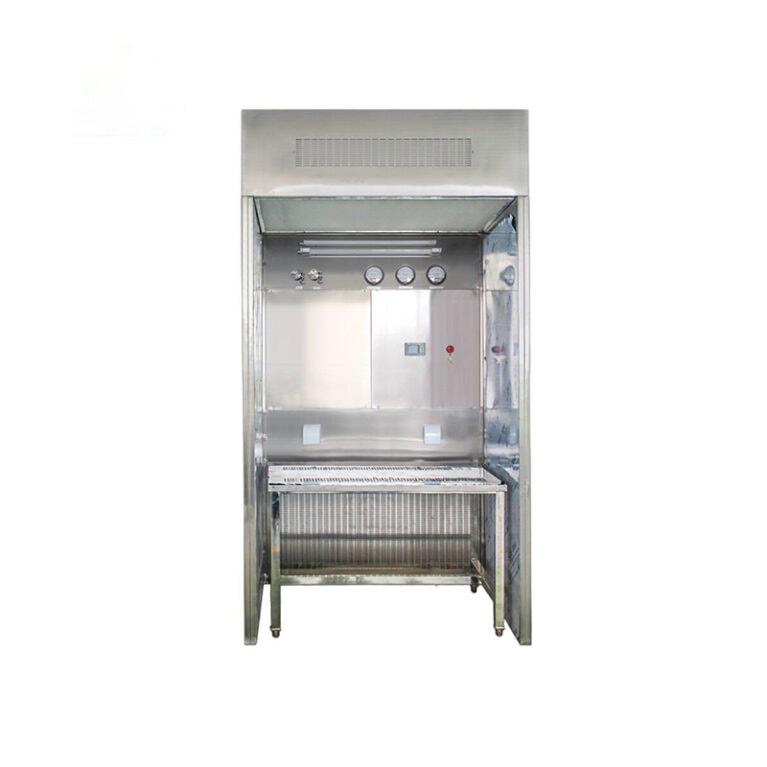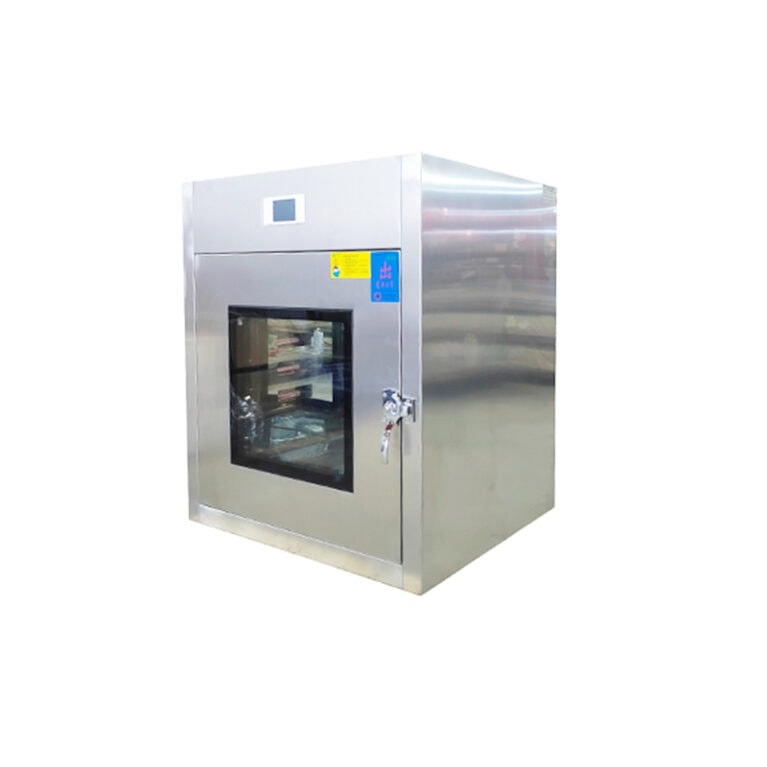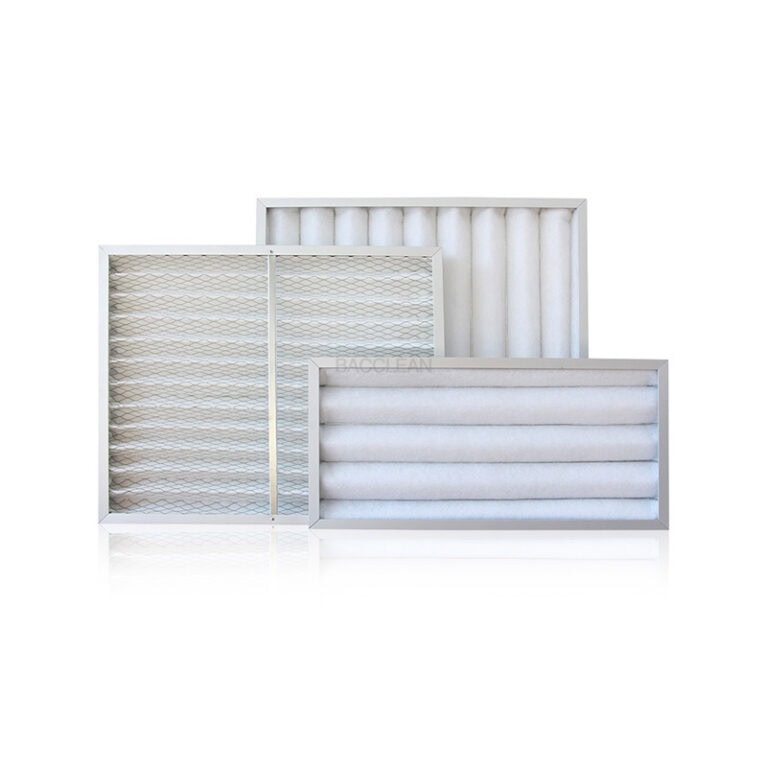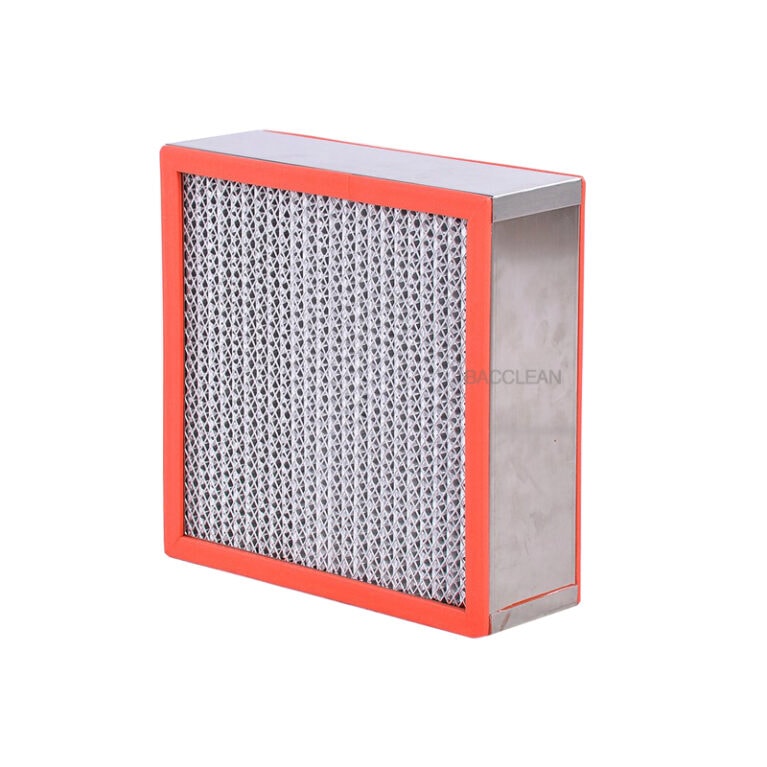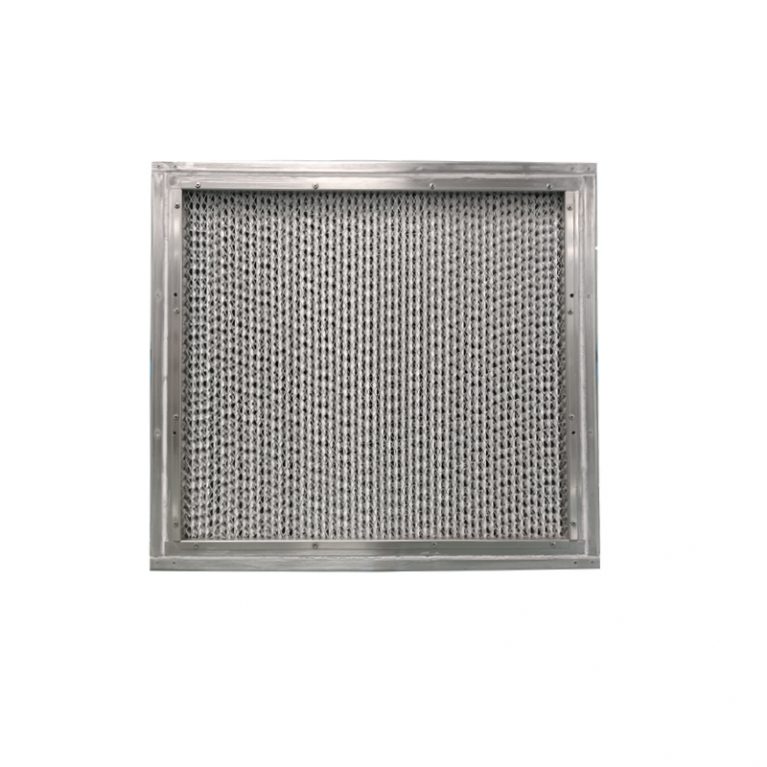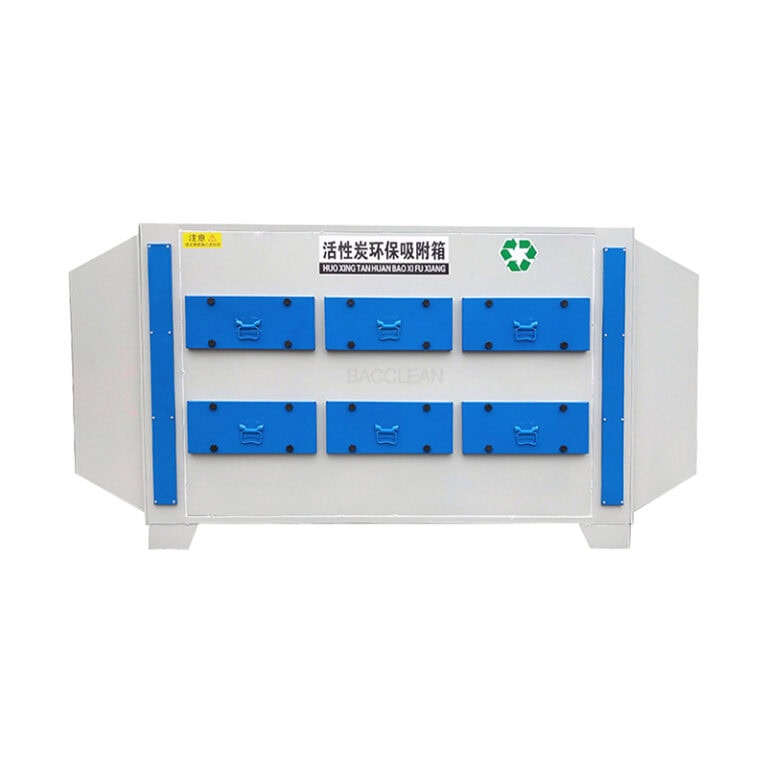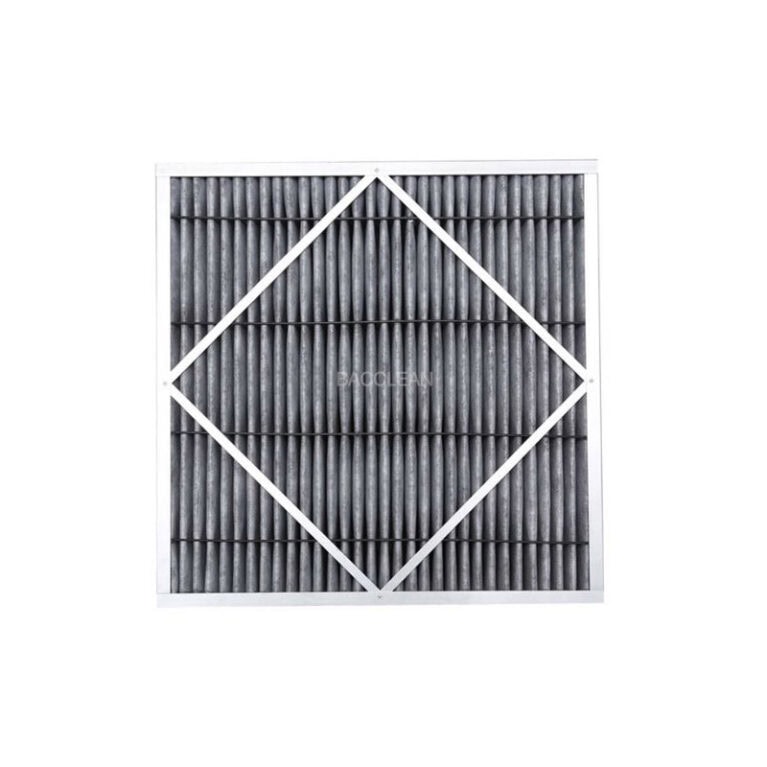The airflow velocity of a vertical flow workbench is usually adjustable, but the specific adjustment capacity depends on the design model and functional configuration of the equipment. The design for regulating the airflow velocity is mainly aimed at meeting the differentiated requirements for cleanliness and safety in various operating scenarios. The following is a detailed description:
I. Feasibility of Regulating Air Flow Velocity
Most mid-to-high-end models support adjustment. Mainstream vertical flow workbenches (especially those used in fields with strict environmental requirements such as biomedicine, pharmaceuticals, and electronics) are usually equipped with wind speed adjustment functions. Through the knobs, buttons, or touch interface on the control panel, the airflow speed can be adjusted within a certain range (typically 0.3-0.5m/s). This is the range of air velocity recommended by international standards for clean benches, which can be continuously or stepwise adjusted.
Some basic models may have a fixed air velocity: A few economical or simple vertical flow workbenches (such as equipment temporarily used in small laboratories) may adopt a fixed air velocity design. Their fan power and air duct structure are fixed, and the air velocity cannot be adjusted, only meeting the basic cleanliness requirements.
Ii. The core purpose of regulating air flow velocity
The adjustment of air flow velocity is not set randomly but is to match the requirements of specific operation scenarios:
Adapt to different operation objects
When handling sensitive samples (such as cells and sterile reagents), a higher wind speed (such as 0.4-0.5m/s) is required to form a stronger “air curtain” to prevent external contamination from entering.
When handling light powders or volatile substances, the wind speed can be appropriately reduced (such as 0.3-0.4m/s) to prevent excessive airflow from causing the substances to splash or diffuse too quickly, making it difficult to control.
Balance cleanliness and energy consumption: When in long-term continuous use, the wind speed can be adjusted according to the operation intensity (for example, the wind speed can be appropriately reduced during non-operation periods), reducing energy consumption while maintaining a basically clean environment.
Compliance with industry standards: Different industries have clear standards for air flow velocity (for example, GMP requires that the vertical unidirectional flow velocity should not be less than 0.3m/s), and the adjustment function can ensure that the equipment meets compliance in different scenarios.
Iii. Implementation Methods of Regulation
The air flow velocity regulation of the vertical flow workbench is mainly achieved through the following two methods:
Fan power regulation: By changing the input power of the built-in fan (such as using a variable-frequency motor or a multi-speed motor), the fan’s rotational speed is directly controlled, thereby altering the output speed of the airflow. This is the most common adjustment method, with a relatively wide adjustment range (usually adjustable between 0.2 and 0.6m/s).
Air duct valve control: Some equipment indirectly controls the air velocity by adjusting the opening degree of the valves inside the air duct to change the cross-sectional area of the air flow. This method has relatively low adjustment accuracy and is more common in simple models.
Iv. Precautions
Wind speed is not necessarily the higher the better: Excessively high wind speed may cause airflow disorder in the operation area, thereby increasing the risk of pollutant diffusion. At the same time, it may blow up particles on the workbench or cause samples (such as liquids in petri dishes) to splash.
Regular calibration is required: After the adjustment function has been in use for a period of time, due to changes in filter resistance (such as dust accumulation in HEPA filters), the actual air flow velocity may deviate from the set value. It needs to be calibrated with professional instruments (such as anemometers) to ensure compliance with operational requirements.
In conclusion, whether the airflow velocity of a vertical flow workbench can be adjusted depends on the equipment model. Most professional-grade equipment supports adjustment, and the adjustment function is designed to better meet the cleanliness and safety requirements of different operation scenarios. When in use, it is necessary to set it reasonably in combination with the specific operation object and industry standards.
